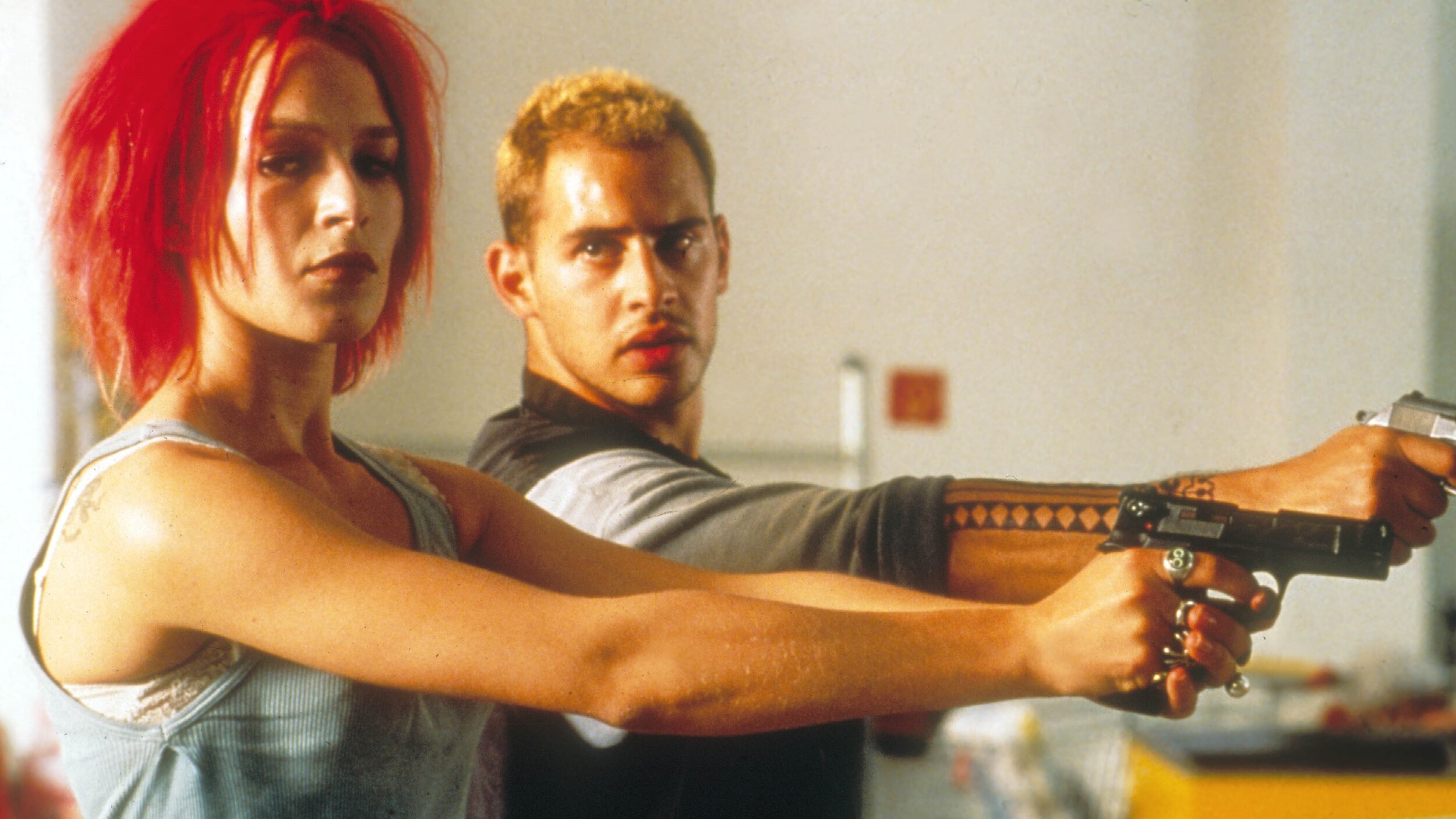
★★★½
Directed by Tom Tykwer
Starring - Franka Potente, Moritz Bleibtreu, Herbert Knaup
Run Lola Run (1998)
Written by Dalton Welsh - September 29, 2020In Tom Tykwer’s 1998 German experimental cult classic Run Lola Run we watch as our protagonist Lola races to retrieve $100,000 for her boyfriend in the next 20 minutes or else he faces serious consequences. The film proceeds to show three possible scenarios based on the chance encounters Lola has along the way. The film has late 90’s style written all over it, complete with a tension building, pulsating techno soundtrack and frenetic and wildly inventive fast paced editing and camerawork. With a unique story framing and reasonably compelling themes to make up for the limited time available for more in-depth character development.
In regards to the faults of the film, while they are smaller critiques, when placed into a film that is a mere 80 minutes long they take on a slightly larger impact. For example, the opening credits and in sparing moments throughout the film they have make use of 2D animation. While the attempt to add some variety to the film and do something different is nice, one cannot help but feel these sequences to be somewhat out of place. And while the grungy, unpolished aesthetic of the animation feels appropriate to the period and style, it nonetheless still feels slightly amateuristic. Additionally, while there are certain characteristics and idiosyncrasies of our cast of characters that add intrigue to the film, such as the costuming and hairstyling of Lola giving a unique quality to her character. The overall development of the characters falls a little short, but then again the individual plight of the characters themselves while the focal point of the film isn’t really where the overarching message of the film lies.
The prevailing theme of the film seems to be the idea of how quickly and drastically our lives can change depending on the choices we make, shown very literally in the films display of multiple scenarios based on the seemingly inconsequential decisions of our protagonist Lola. And while it’s not pushing any significantly profound messages, it is still effective at making you contemplate the consequences of your actions and how quickly your life can be turned upside down. But it is also equally encouraging and uplifting in that our destiny is not predetermined and that the most seemingly insignificant occurrences could become or lead to some of the most defining moments in our lives.
The manner of communicating these ideas through multiple scenarios is one of the many elements of the film that gives it an endearingly unique quality. Each scenario has enough to differentiate it from the others to maintain intrigue from the audience. Additionally, by having this framing device the film is able to maintain this ticking clock element of needing to retrieve the money within 20 minutes for the whole runtime, fuelling the films intoxicating intensity. Making for a break-neck pace that lends itself perfectly to the films appropriately short runtime.
The film is able to further develop this tension through perhaps its two greatest strengths, the frenzied palpitating score and the uber-stylized frantic camerawork. Both of these factors highlight the late 90’s style of the film, and while perhaps a decade ago the style could have felt poorly dated, enough time has now passed since the period that it feels endearingly quirky and perhaps even antiquated. With a constant techno sound in the background of the film, particularly in the running scenes it goes a long way to building the suspense, as if the score were mimicking the heartbeat of our protagonist getting faster and faster as time is running short and the stakes are growing. And on top of the that the composition itself works successfully on its on as a piece of electronic music. Then there is the camerawork, with a frequent amount of scenes of our protagonist running, great effort is made to diversify the shooting techniques to keep things interesting, while maintaining the continuity of the scenes. Despite the seemingly small budget of the film director Tom Tykwer doesn’t hold back with frequent crane shots, long tracking sequences, purposeful Dutch angles and frequent motion that gives the entire film an exciting energy, it is clear that so much creative intent has been packed in to the movement of the camera thanks to Tykwer’s collaboration with director of photography Frank Griebe.
Ultimately, while German director Tom Tykwer’s film “Run Lola Run” sometimes misses some of its shots, the attempts at doing so are nonetheless admirable, with the positive attributes of the film most definitely making up for it. With a unique storytelling method, a successful tension filled soundtrack that feels almost like another character in the film looming over our protagonist and a wildly creative use of the camera. Tykwer has proved himself to be a director with unquestioning vision and a flare for exciting and experimental filmmaking.
